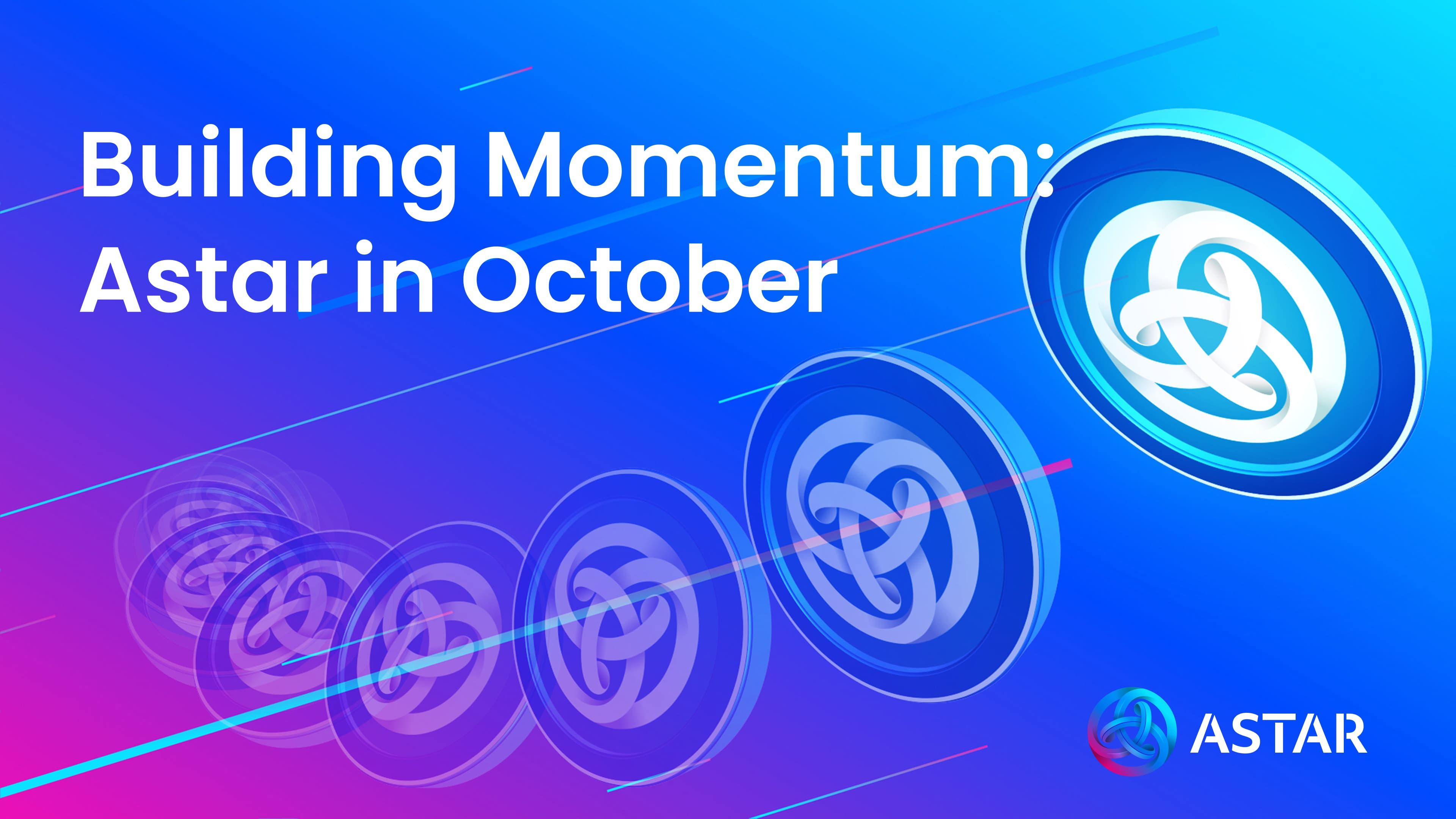Table of Contents
October marked a period of strong execution for Astar. From core protocol upgrades to economic testing, grants, and ecosystem growth, the network demonstrated how engineering and governance continue to evolve together. The month’s progress laid the groundwork for Astar Evolution Phase 2, anchored by the Burndrop proposal and a broader focus on stability, interoperability, and sustainable growth.
Strengthening the Network: Runtime-1900, Asset Hub Maintenance, and Agile Coretime Renewal
The Runtime-1900 upgrade was approved and deployed in October, keeping Astar aligned with key technical developments across the Polkadot ecosystem. As Polkadot prepares to migrate assets from the Relay Chain to the Polkadot Asset Hub, Astar performed maintenance to temporarily pause DOT transactions between Polkadot and Astar during this period.
This step ensures a smooth transition once the asset migration is finalized, maintaining stability and consistency for Astar users and builders. The upgrade reflects Astar’s continued focus on proactive network maintenance and close coordination with ecosystem-wide changes.
At the same time, Astar renewed its Agile Coretime allocation, reinforcing the network’s operational readiness and efficient resource management on Polkadot. Together, these updates reinforce Astar’s infrastructure and ensure the network remains technically prepared as Polkadot evolves.
Refining the Economic Model
Astar’s economic design advanced this month with a clear shift toward a fixed supply approach. Tokenomics 3.0, now in testing on the Shibuya testnet, implements an inflation-decay schedule that progressively limits new issuance and guides the protocol toward a defined long-term supply profile. The model increases predictability for ASTR’s supply dynamics and strengthens coordination across network participants as Astar moves into Evolution Phase 2.
Burndrop: Setting the Stage for Astar Evolution Phase 2
The Burndrop RFC introduced a voluntary mechanism where ASTR holders can burn their tokens in exchange for allocations of future tokens from the Startale ecosystem. This proposal reinforces ASTR’s position at the center of Astar’s economy by directly linking token burns to broader ecosystem participation.
Burndrop is designed to fortify Astar’s long-term economic foundation, reducing circulating supply while deepening the token’s role in network alignment and value creation. As one of the cornerstone proposals for Astar Evolution Phase 2, it sets a new direction for how Astar’s growth and token dynamics will evolve together. The RFC remains open for feedback, and the community is encouraged to review and contribute to the discussion.
Expanding Horizons
October also saw Astar broaden its presence across the web3 landscape. Astar continues efforts to engage with leading protocols and explore new opportunities for collaboration. These conversations reinforce Astar’s commitment to interoperability and its vision of connecting ecosystems rather than operating in isolation.
Ecosystem Momentum: Builders, Grants, and Governance
Astar’s ecosystem continued to grow in both depth and diversity throughout October.
dApp Staking
New projects joined dApp Staking, giving ASTR holders more ways to support builders. Sake Finance, a DeFi protocol introducing innovative liquidity tools, and Aradia, a creator-focused NFT platform, were among the additions. Their inclusion highlights how developers are leveraging Astar’s staking model to integrate community support with meaningful onchain activity.
Soneium For All Grant Winners
Six projects were selected in the Soneium For All program under the Astar grant initiative, including Zombie Idle Defense, Lootcoin, and Animix. These winners extend ASTR’s reach across gaming, entertainment, and digital assets, showing how onchain creativity continues to expand within the Astar and Soneium ecosystems. The SFA roundtable that followed provided a platform for builders to share insights and exchange ideas, strengthening the community around Astar’s growing network of innovative, builder-led projects.
Astar at the Polkadot Builder Party
Astar participated in the Polkadot Builder Party, supporting developers exploring new use cases across the Polkadot ecosystem. Through Office Hours and technical guidance, Astar is helping teams learn how to deploy on Astar Native (WASM) and Astar EVM. The event showcases Astar’s ongoing commitment to empowering builders and making multichain development more accessible.
Governance in Motion
Governance remained active, with proposals such as Runtime-1900, Tokenomics updates, and new dApp Staking motions progressing through community approval. Each decision reflected the maturity of Astar’s governance system and the collective involvement of its community in shaping the network’s future.
Looking Ahead
With the runtime upgrade deployed and the Asset Hub migration ongoing, Astar’s infrastructure is entering a new operational phase. Tokenomics 3.0 testing continues, community feedback on Burndrop is guiding refinement, and ecosystem programs are broadening ASTR’s real-world utility.
The coming months will focus on activation and coordination: completing the migration, advancing economic proposals through governance, and supporting projects moving from testnet to mainnet. Together, these efforts define the early landscape of Astar Evolution Phase 2, where technical readiness, economic design, and ecosystem growth converge into a single trajectory of sustainable progress.

